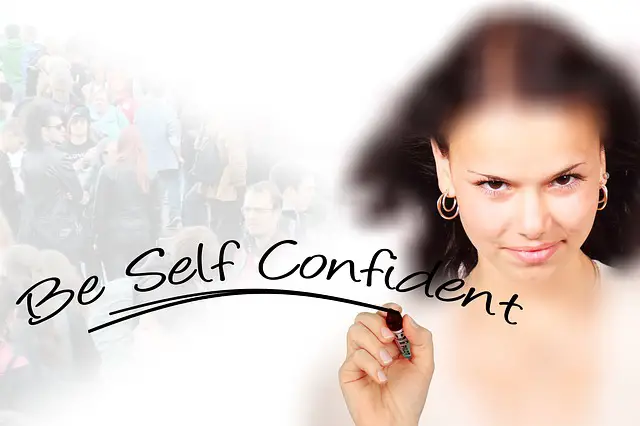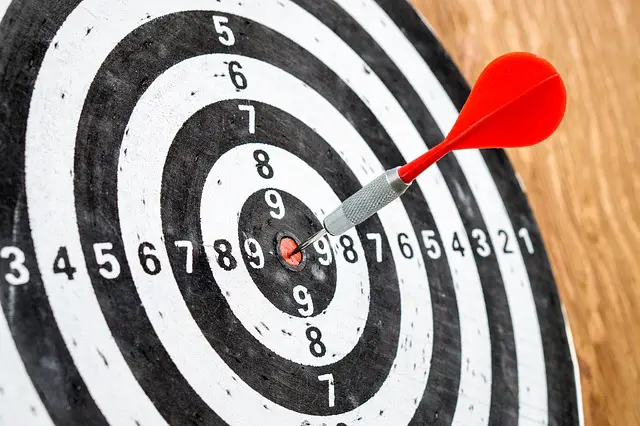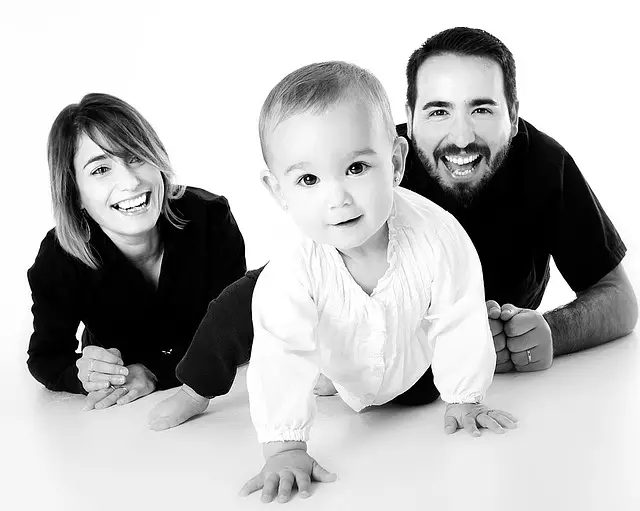Self-esteem has never been a very significant and debated term than currently. Self-esteem has a lot of definitions and swift strategies to accomplishing standard self-esteem. However, what do we actually understand about this very significant psychological term? The author of this book uses examples of a lifetime clinical practice and research to provide a detailed definition.
These chapters take us through a journey of six various practices for everyday living that form healthy self-esteem. You’ll learn about how improved awareness, acceptance, responsibility, assertiveness, purposefulness, and integrity will improve your self-esteem.

1 – The immune system of consciousness is self-esteem and it is significant for working at your greatest.
“There are ten steps to develop your self-esteem!” “Five guidelines to achieve confidence!” How many self-help experts have you heard mentioned statements like these? Perhaps, a lot. We often hear about self-esteem, however, can you define it?
Self-esteem is the immune system of consciousness; it gives strength, resistance, and also the capacity to restore. It is similar to our immune system, self-esteem is inborn, and we require it to solve life’s problems.
Another suitable correlation for self-esteem is Calcium. Calcium makes our teeth as well as our bones stronger and it is important for a healthy body, whereas self-esteem is important for strong psychological development. While we wouldn’t really die due to a lack of calcium, our ability to live our life fully would essentially be restricted. This applies to self-esteem as well. We don’t require it live; however, we can’t live a complete life without it. Why is this so?

It entirely has to do with how our self-esteem functions– by forming specific expectations about what we are capable of achieving. These expectations impact our behavior in a manner that changes them into reality. Self-esteem develops into a self-fulfilling prophecy.
Let’s use the story of a recovering alcoholic from the author’s psychotherapy practice. He was close to getting the largest commission of his profession as an architect. However, rather than being happy about it, he was extremely nervous and he felt that he wasn’t worth it. Why is this so? This is as a result of the low self-esteem and the low expectations he had for himself. He decided to drink in order to be able to calm his nerves, and he got very drunk, acted rudely and lost the job. Unluckily for him, his low self-esteem led him to his downfall.
2 – Self-esteem is mainly about battling for your right to happiness and encountering problems with confidence.
Since self-esteem is very significant for our consciousness, it’s important to go a bit deeper into the topic, beginning with the major ideas it is based on.
Self-esteem actually comes down to something pretty easy–all of us have the right to be happy. This means that high self-esteem enables us to affirm this right and take the necessary steps needed to accomplish it. In contrast, we experience low self-esteem when we allow our right to happiness to be overridden.
Let’s look at this difference in actual terms. Imagine the client who questioned the author the reason why she continuously loved married guys who didn’t pay attention to her. This pattern began to make more sense when the client said that her father left her and her family when she was only a child, and the blame was put on her by her mother. Therefore, what is the connection with self-esteem?
Her father leaving and the negative of her mother formed her self-esteem by making her think that she was undeserving of love. Later on in life, she started to act in a manner that made her reality imitate this conviction. By tripping for married men who would often abandon her, she strengthened the feeling that she was really unworthy of love. Low self-esteem regularly presents itself like this: we make decisions that enable our negative opinions about others to turn to reality, regularly hurting ourselves in the process.

On the other hand, if we have high self-esteem, we’re not just less likely to cause difficulties for ourselves, but also being determined to face any challenges we might encounter. This is a thing psychologists have confirmed by putting participants with different levels of self-esteem in the same activity. Unknown to the participants, the activities comprise numerous problems. However, participants with high self-esteem endure much longer than participants with low self-esteem.
This study illustrates how our opinion of ourselves strongly affects how we react to problems and this is the influence of self-esteem. The next chapters will tell you how to use it!
3 – The mindset and exercise of living consciously is the first pillar of self-esteem.
What do we need to do in order to develop self-esteem? It’s not as abstract as you consider it to be. Let’s look at the six pillars which will direct us.
It starts with a change in mind-set. We need to begin by living consciously if we need to develop our self-esteem.
Living consciously doesn’t involve some type of zen, mysterious way to life. Living consciously simply entails being willing to differentiate between three features of perception which are facts, interpretation, and emotion. This is a simple illustration of how those features three can get twisted together: because your boyfriend is frowning, you assume that he is annoyed and you feel hurt by that.
However, what if you actually didn’t see him frowning? If you understand that you may have misjudged his facial expression, you can reconsider your analyses from a distance, without responding emotionally.
We can preserve this mindset by questioning ourselves all through the day with questions like: “How am I feeling presently?” “What is the reason for feeling this way?” and “Do my deeds fit with my feelings?” By doing that, we’ll keep in touch with our internal world.

But, living consciously isn’t only a mindset, it is also a practice. We need to keep looking for information from our surroundings and alter our deeds accordingly. Here’s an easy illustration that demonstrates conscious living as both a mindset and practice.
Let’s say you’d like to get brand new clothes. You’ll have done this by consciously engaging with your “internal world,” or your wish to appear different. However, you will have to also check your external world too, or, more precisely, if you have money to buy it– the “practice” aspect of your buying. This process considers both your feelings and your circumstances, you can be certain that your final conclusion will be a good one.
Living consciously in this manner offers an important understanding of ourselves, which is a requirement for nurturing our well-being.
4 – Both the second and third pillars of self-esteem will instill in you how to embrace yourself and control your own happiness.
Self-acceptance, self-responsibility, self-esteem. The first two terms are really associated with the third and it’s a bit difficult to differentiate them– the fact that they have the exact prefix doesn’t even help! However, the difference is more obvious than you imagine. Self-acceptance and self-responsibility are things that we do in order to boost our self-esteem.
When we decide to value ourselves, we’re working on self-acceptance which is the second pillar of self-esteem.
For instance, have you done something that you feel remorse for last week? Maybe got angry at someone, or ignored something you ought not to? Self-acceptance doesn’t entail that you support or like these negative deeds, instead, it tries to understand the reasons that caused them – maybe you felt supported, or you were worried about something else. If you admit the reason why you responded in that manner, you will lessen the probability of this unwanted behavior repeating.

However, if we admit our present actions, isn’t there a danger that we’ll grow satisfied and lack the motivation to transform it? In this lies the paradox: if you don’t take yourself as you are currently, you’ll never see the determination to improve because you will spend your entire energy on worrying about your failings.
Also, Self-acceptance coheres with being accountable for ourselves. The third pillar of self-esteem is the practice of self-responsibility. It involves taking charge of your being, and your happiness, by having a solution-oriented mindset. This entails asking about the following question whenever a difficulty occurs– “What can I do about the problem?”
Endeavor not to blame other people, take charge of your actions. Rather than saying “He drives my buttons” or “I would behave differently if she would only… ” know that it’s not someone else’s duty to make us happy. Certainly, that job is yours! Accepting this fact will enable us to empower ourselves which is an essential feature of self-esteem, as we’ll see in the next chapters.
5 – Self-assertiveness is the fourth pillar of self-esteem and it involves standing up for yourself, which is actually hard than you might imagine.
A statement we all can agree to is “I have a right to exist”, right? Here’s a task for you: say those statements out loudly. Even when you’re alone, doing this feels a bit embarrassing. However, why is this so?
The majority of us don’t understand this; however, we regularly struggle to declare such a simple right. To emphasis this, the author questioned his psychology students if they believed that they had a right to exist. They all agreed to the question, however, when they were told to say the words out loud, they were anxious and even sounded fearful.
This subtle fear of declaring our rights is really normal. It boils down to the following natural thought processes: “If I show how I feel, I may provoke dissatisfaction,” or “If I assert myself, I may provoke hatred.” This perception is a direct hindrance to improving our confidence, however, we can overcome it by following the fourth pillar of self-esteem which is self-assertiveness.

In order to be self-assertive, you have to basically openly be who you are. You need to have the mind-set that your beliefs are essential in order to practice self-assertiveness. For instance, let’s assume that you’re at a party and you hear a racial insult that seems offensive to you. Having the boldness to say your view is practicing self-assertiveness. Or maybe you have just watched a movie with your friends and you felt really moved by it. Say that, and don’t act indifferently because you fear being seen as uncool.
Every time you express yourself or stand up for your beliefs, you improve your sense of self-esteem. However, there are still other two pillars to follow for healthy self-esteem.
6 – Living a life of purpose and practicing personal integrity are the fifth and sixth pillars of self-esteem.
How do you wish to live your life? A lot of people would say “with purpose and integrity.” As it is, these two qualities are part of the essential pillars for healthy self-esteem.
As we develop our confidence, it’s important that we first take charge of our goals. By questioning yourself what you need and where you wish to get, you’ve already begun to take the fifth pillar of self-esteem, which is living purposefully as your guide. However, that’s not enough. You need to keep evaluating your own progress.
This can be illustrated in the story of Jack. Jack dreamt his entire life of becoming a writer. However, rather than developing his skills, he decided to only “wait till he felt prepared.” Hence, what do you think occurred? Was Jack’s wish to become a writer sufficient to make his dream come true without doing any work on his part? Definitely not. Years after, Jack was no nearer to accomplishing his dream. Even though he’d had a clear purpose for himself ( which is being a writer), Jack did not take any active steps to accomplish it, therefore he was unsuccessful in living a purposeful life.

Therefore, our self-esteem lies in our ability to make our deeds align with our goals. Also, it involves letting our behavior align with our words, or having personal integrity. This feature can present itself in a number of small daily things, like fulfilling promises and saying the truth even when lying would enable things to look more appealing. In contrast, an absence of personal integrity is displayed by dishonesty and hypocrisy.
At times, the hardest pillar to practice can be personal integrity, since we live in a society where immorality is normal, and cynicism is seen cool. Nevertheless, personal integrity is really important for healthy self-esteem, that you should not allow people that surround you lure you into sacrificing it.
7 – Parents and teachers have an essential part to play in fostering a child’s self-esteem.
Up till now, we’ve looked at the self-esteem-bolstering deeds and mindsets that are within our own power. However, there’s an additional factor that can be extremely important in our self-esteem – the people who have been present since the start of our lives and that is our parents.
Parents can let it both be easier and difficult for a child to cultivate self-esteem. A study that was conducted by Stanley Coopersmith a psychologist revealed that while parental factors like social class, money, education, and geography didn’t add to a child’s self-esteem, the quality of the relationship did contribute.
However, what forms a positive relationship between parents and their children? There are numerous parts to it: Firstly, parents have to admit the thoughts as well as feelings of their child, in order for her to understand that they are valid and valued. Secondly, parents themselves need to show their own high levels of self-esteem in order for their children to learn from them as role models. Thirdly, parents need to have clear boundaries for their child in order to establish a strong sense of security.

This may look like too much, however, they are vital for a child’s growth. If parents make their children believe that something is not okay with them, low self-esteem will instantly show.
Fortunately, children who haven’t established healthy self-esteem during their early years have another opportunity at school. A teacher that forms confidence in a child can have an incredible, positive impact. As a matter of fact, research demonstrates that a teacher’s expectations can be self-fulfilling predictions. If a teacher believed in the child’s capacity to master a certain skill, this confidence regularly turns into reality.
But, a teacher’s motivation should certainly not be founded on applauding success or punishing failure. Instead, teachers flourish when they foster reality-based self-esteem. The tactic for this method is making the child feel recognized so that their thoughts and deeds are acknowledged as well as respected. This can be accomplished through positive helpful feedback that motivates them as they develop and succeed.
8 – High self-esteem is nurtured in the employees of successful companies.
Up till now, we have looked at how self-esteem can be beneficial in our personal lives. However, what about the workplace?
In current decades, there’s been a rise in entrepreneurship: during the late 1980s, almost 700,000 new enterprises were established yearly, compared to just 100,000 enterprises during the highest years of the 1960s. This entrepreneurial rise was accompanied by an urgent need for leaders and employees that have the skills of self-direction, personal responsibility, and initiative. These are all characters nurtured by high self-esteem.
It’s not a shock that successful companies are geared toward fostering self-esteem. However, how can an organization nurture this valuable skill?

One easy regulation is to provide feedbacks that develop employees’ strengths. This lets them feel good about themselves and they gain more confidence in dealing with future issues.
Also, leaders play a huge role in this: they can foster high self-esteem by, for instance, regularly looking for new methods to fuel innovation and creativity in their organizations.
Self-esteem and its six pillars aren’t something you can try out as a person– they are values that assist the growth of organizations and it makes organizations flourish as well.
Six Pillars of Self-Esteem by Nathaniel Branden Book Review
Self-esteem is an essential human need that enables us to handle life’s problems better. In order to accomplish self-esteem, use the six action-based pillars. The six action-based pillars are the practices of conscious living, self-acceptance, self-responsibility, self-assertiveness, purposefully living and personal integrity.
Utilize sentence completion to enhance your self-esteem.
“Sentence completion” is an easy and strong exercise for improving your self-esteem. Consider different sentences stems like
“If I bring a greater level of self-esteem to my deeds today—” or
“If I bring a greater level of self-esteem to my relations with individuals today—”
and write down a lot of various endings to them without waiting for reflection. Regardless of what you jot down, provided that it’s a grammatical completion of the stem. By doing this for 10 minutes every day in the morning, it can assist your self-understanding and personal development. You can see more of sentence stems on the author’s homepage.
